Sinigang na Hipon is a daily comfort in our home, especially when the weather can't make up its mind between sunny and rainy. My Lola taught me that the secret to an unforgettable sinigang lies in using head-on shrimp and fresh calamansi - not the bottled stuff. The natural sweetness from the shrimp heads infuses the broth, while fresh calamansi adds that perfect bright citrus kick that makes this soup uniquely Filipino.
I especially love making this version when I spot plump, fresh prawns at the market. It's ready in 30 minutes, which means I can whip it up even on busy weeknights when my family craves something both comforting and light. While some prefer tamarind-based sinigang, this calamansi version has become our household favorite. The clear, citrusy broth ladled over steaming rice never fails to bring everyone to the table with extra calamansi on the side for those who love an extra sour punch.
Jump to:
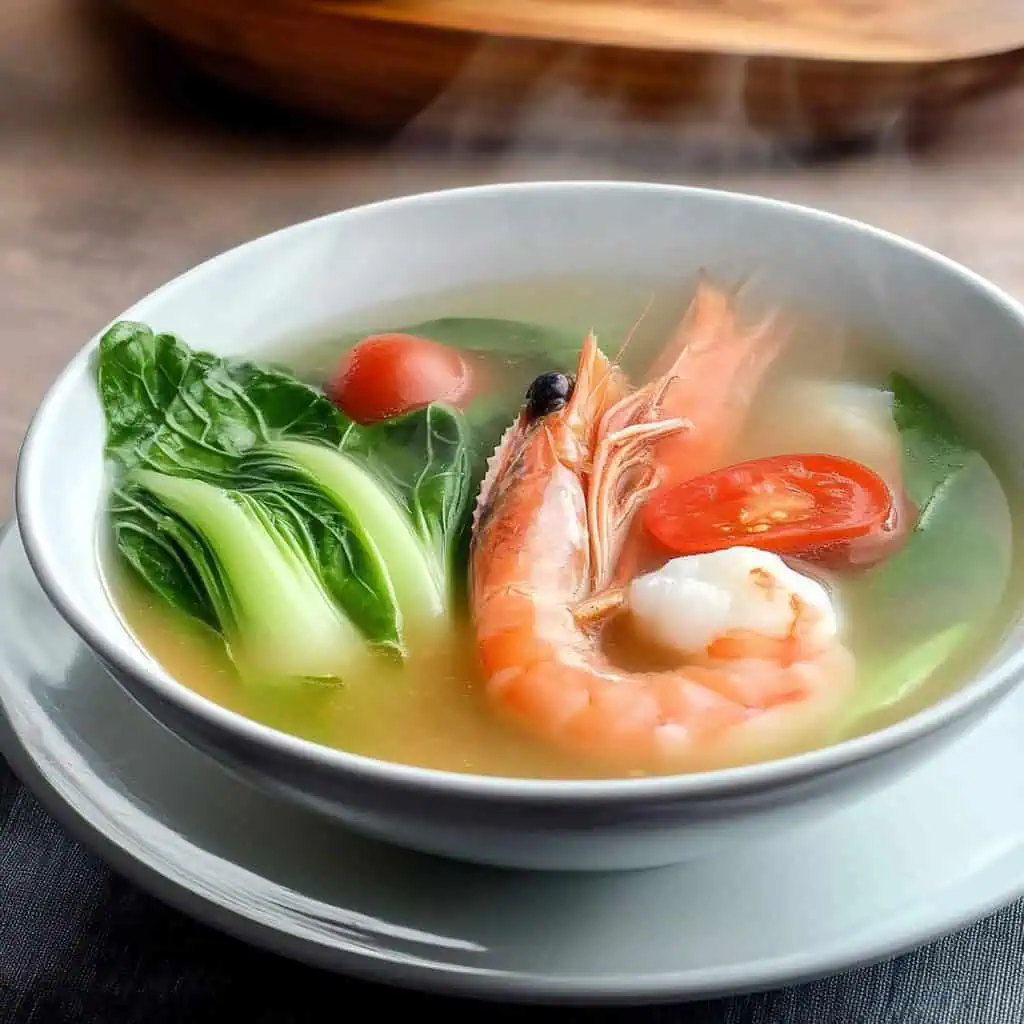
Why You'll Love This Recipe
- Ready in just 30 minutes, perfect for busy weeknights
- Light yet satisfying, ideal for both warm and cold weather
- Naturally healthy and packed with protein and vegetables
- Customizable heat level to suit your taste
- Budget-friendly and easily scaled for larger gatherings
- One-pot meal means minimal cleanup
Ingredients
The ingredients in this Sinigang na Hipon sa Calamansi create a perfect harmony of flavors and textures. Head-on shrimp provide natural sweetness and rich umami, while fresh calamansi delivers the signature sour note that defines sinigang without overwhelming the delicate seafood.
Daikon radish adds subtle sweetness and soaks up the broth, while pak choi contributes a tender-crisp texture and mild earthiness. Tomatoes and onions create the aromatic foundation, slowly releasing their flavors to build depth. Fish sauce introduces the essential salty element that balances the sourness and enhances the seafood character.
Together, these ingredients represent the Filipino genius for combining simple elements into a dish greater than the sum of its parts.
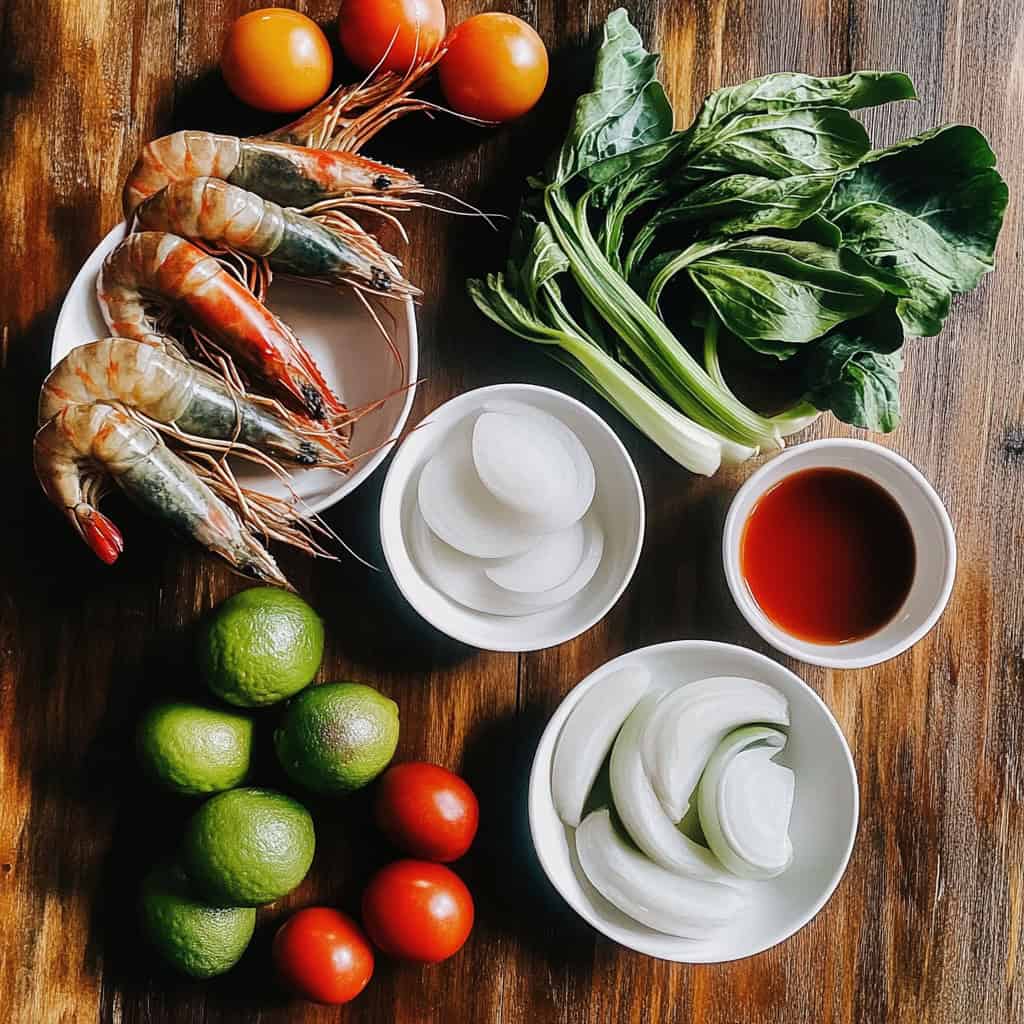
For the Soup Base:
- 5 cups water (rice washing water recommended for extra flavor)
- 1 medium onion, peeled and quartered
- 2 medium Roma tomatoes, quartered
- 2 tablespoons fish sauce (patis)
- 1 cup daikon radish, peeled and sliced ½-inch thick
- 1 pound head-on shrimp, cleaned and deveined
- ½ cup freshly-squeezed calamansi juice
- 2 bunches pak choi, stems trimmed
- Salt to taste
Optional Vegetables:
- Eggplant
- Okra
- String beans
- Water spinach (kangkong)
- Taro (gabi)
Equipment
- Large pot or Dutch oven (6-8 quarts) - Provides adequate space for all ingredients and proper broth circulation
- Sharp knife - Essential for properly preparing vegetables and cleaning shrimp
- Cutting board - Gives you a dedicated surface for safe food preparation
- Measuring cups and spoons - Ensures accurate proportions for balanced flavor
- Citrus juicer or reamer - Makes extracting calamansi juice quick and efficient
- Spider strainer or slotted spoon - Allows for removing ingredients as needed without losing broth
- Ladle - Perfect for serving the soup without spilling
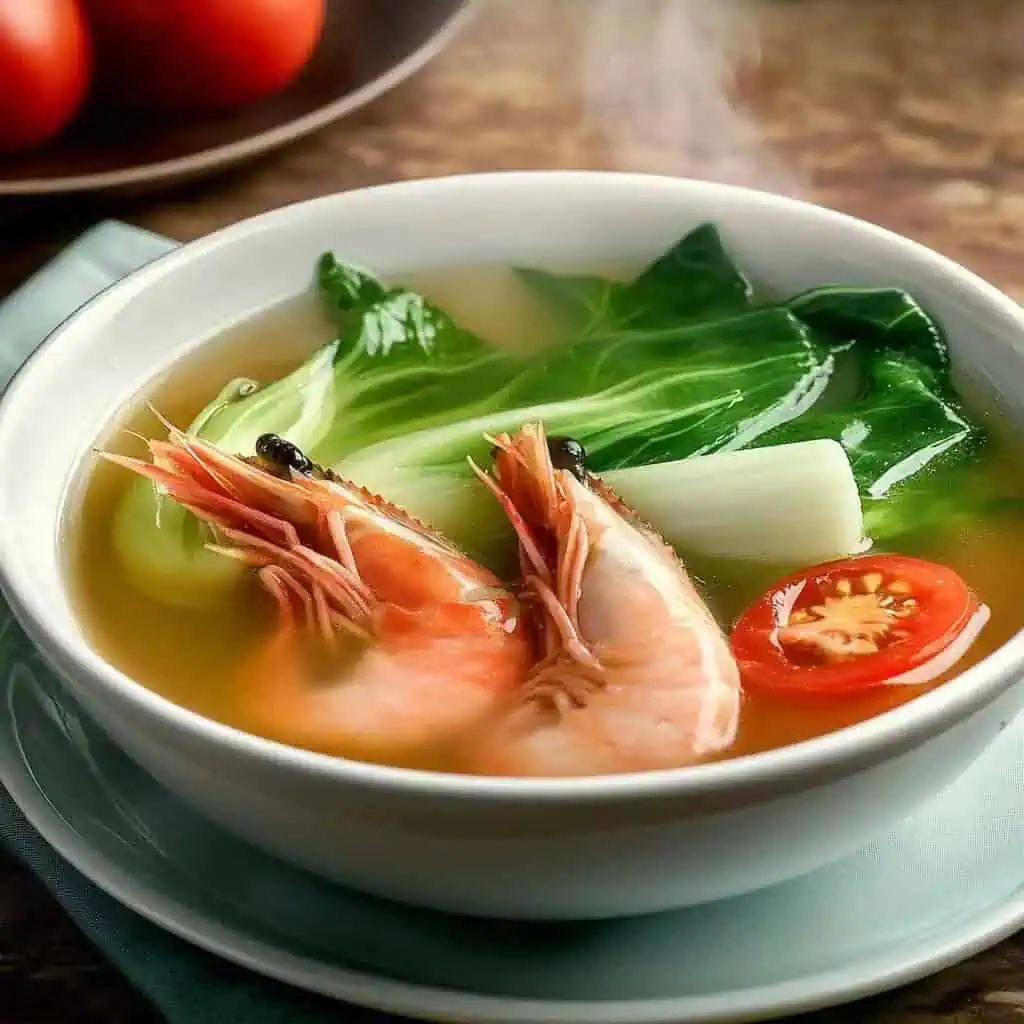
How To Make
- Clean one pound of head-on shrimp by removing the whiskers and black vein inside. Rinse thoroughly with cold water and drain.
- Quarter one onion and two tomatoes. Peel the daikon radish and slice into thick pieces. Wash the pak choi well and trim off the tough bottom parts.
- Squeeze about 8-10 calamansi fruits until you have ½ cup of juice. Set aside.
- Fill a large pot with 5 cups of water (rice washing water adds extra flavor) and bring to a boil over medium-high heat.
- Once boiling, add the quartered onions, tomatoes, and radish. Cook for 2-3 minutes until the onions begin to soften.
- Add the cleaned shrimp, calamansi juice, and two tablespoons of fish sauce. Stir gently and cook for 3-5 minutes until the shrimp turn pink.
- When the shrimp are almost done, add the pak choi leaves, pushing them down into the hot soup to submerge them.
- Turn off the heat, cover the pot, and let sit for 2 minutes to cook the pak choi to perfect tenderness.
- Taste and adjust seasoning with additional fish sauce or salt if needed. Serve hot with steamed rice and extra fish sauce on the side.

Tips from Lola's Kitchen
- Use head-on shrimp - The heads contain fat that melts into the broth, creating a naturally sweet and rich flavor base
- Stage your cooking - Add vegetables in order of their cooking time (longest to shortest) for perfect texture
- Fresh calamansi makes a difference - Bottled juice works in a pinch, but lacks the bright aroma of fresh fruit
- Rice washing water - Contains extra starch and nutrients that enrich the broth
- Watch shrimp cooking time - Overcooked shrimp become tough and rubbery; they're done as soon as they turn pink
- Taste as you go - The perfect sourness is subjective, so add calamansi gradually to reach your ideal flavor
- Keep it simple - The beauty of this dish lies in its clean flavors and straightforward preparation
Substitutions
- Calamansi: Lemon or lime juice (use ⅓ cup to start as they're more acidic)
- Pak choi: Regular bok choy, spinach, or mustard greens
- Daikon radish: White radish, turnip, or jicama (slightly different texture)
- Fresh shrimp: Frozen shrimp (thaw completely first and pat dry)
- Fish sauce: Salt or light soy sauce (start with 1 tablespoon and adjust)
- Rice washing water: Regular water or light chicken broth
Troubleshooting
- Soup too sour: Add ½ cup water or dilute with a pinch of sugar to balance
- Soup too bland: Add fish sauce one teaspoon at a time, allowing flavors to meld
- Vegetables too soft: Add sturdy vegetables (radish, eggplant) earlier, leafy greens just before serving
- Shrimp tough and rubbery: They're overcooked; next time, remove from heat as soon as they turn pink
- Broth cloudy: Use lower heat and avoid vigorous boiling; a gentle simmer yields a clearer broth
- Not enough broth: Add hot water ½ cup at a time and adjust seasonings accordingly
Storage & Reheating
- Refrigeration: Store in an airtight container for up to 2 days; the flavors actually develop overnight
- Freezing: Not recommended as shrimp and vegetables will become mushy
- Reheating on stovetop: Heat gently to just below boiling point, stirring occasionally
- Reheating in microwave: Use 50% power in 1-minute intervals, stirring between
- Best practice: If planning leftovers, consider removing some shrimp and vegetables before refrigerating, then adding them back during the last minute of reheating

FAQ
Can I make this ahead of time?
Best prepared fresh, but you can prepare the broth base up to 24 hours ahead. Add shrimp and vegetables just before serving.
Is this dish spicy?
No, the dish itself isn't spicy, but many Filipinos serve it with fresh chilies on the side to add heat as desired.
Can I use peeled shrimp instead?
Yes, but you'll miss out on the rich flavor that shrimp heads provide. Consider making a quick shrimp stock with the shells for more depth.
How do I know when the shrimp are perfectly cooked?
They should be pink and slightly curved (forming a loose C-shape). If they curl into a tight O-shape, they're overcooked.
Can children eat this dish?
Absolutely! You can reduce the sourness for young palates by using less calamansi juice and removing shrimp heads before serving.
What makes calamansi different from lemons or limes?
Calamansi has a unique sweet-tart flavor profile that's less acidic than lemons or limes, with subtle floral notes that are distinctively Filipino.
How can I make this dish more filling?
Serve over steamed rice or add starchy vegetables like taro (gabi) to make it more substantial.
Is this dish healthy?
Yes! It's low in fat, high in protein, and packed with vegetables and vitamin C from the calamansi.
Related
Looking for other recipes like this? Try these:
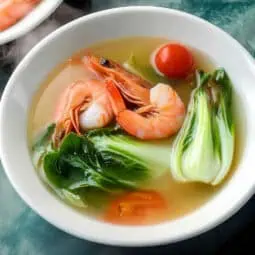
Sinigang na Hipon sa Calamansi (Filipino Shrimp Sour Soup)
Equipment
- Large pot or Dutch oven (6-8 quarts) For cooking the soup with adequate space for ingredients
- Sharp knife For preparing vegetables and trimming shrimp
- Cutting board For safe ingredient preparation
- Measuring cups and spoons For accurate ingredient portions
- Citrus juicer or reamer For extracting calamansi juice efficiently
- Spider strainer or slotted spoon For removing ingredients as needed
- Ladle For serving
Ingredients
For the Soup Base:
- 5 cups water tubig or rice washing
- 1 medium onion sibuyas, peeled and quartered
- 2 medium Roma tomatoes kamatis, quartered
- 2 tablespoons fish sauce patis
- 1 cup daikon radish labanos, peeled and sliced ½-inch thick
- 1 pound head-on shrimp hipon, cleaned and deveined
- ½ cup freshly-squeezed calamansi juice
- 2 bunches pak choi pechay, stems trimmed
- Salt asin to taste
Optional Vegetables:
- Eggplant talong
- Okra
- String beans sitaw
- Water spinach kangkong
- Taro gabi
Instructions
- Start by cleaning one pound of shrimp. Keep the heads on but remove the whiskers and black vein inside. Rinse them well with cold water and let them drain.
- Cut one onion into four pieces. Do the same with two tomatoes. Peel the daikon radish and cut into thick slices. Wash the pechay well and cut off the tough bottom parts.
- Squeeze about 8-10 calamansi fruits until you have half a cup of juice. Set this aside.
- Get a pot and fill it with 5 cups of water (you can use rice washing water for extra flavor). Turn the heat to medium-high and let it start boiling.
- Once the water is boiling, add your cut onions, tomatoes, and radish. Let these cook together for about 2-3 minutes until you see the onions starting to soften.
- Now add your cleaned shrimp, pour in the calamansi juice, and add two tablespoons of fish sauce. Stir everything gently. Watch your shrimp - they'll need about 3-5 minutes to cook. You'll know they're done when they turn nice and pink.
- When your shrimp are almost done, add the pechay leaves. Use your spoon to push them down into the hot soup so they're covered with liquid.
- Turn off the heat and put the lid on your pot. Let everything sit quietly for 2 minutes - this will cook the pechay leaves just right without making them too soft.
- Give your soup a taste. If you think it needs more saltiness, add a little more fish sauce or salt. Serve hot in bowls, with some steamed rice on the side and extra fish sauce for those who want it.
Tips from Lola's Kitchen
- Use head-on shrimp for richer flavor
- Don't overcook the shrimp to maintain its tender texture
- Add vegetables in order of cooking time (longest to shortest)
- Save rice washing water for extra flavor and nutrients
- Adjust sourness gradually - you can always add more calamansi
- Fresh ingredients make a significant difference in taste
Nutrition
The Story Behind Sinigang na Hipon sa Calamansi
A beloved cornerstone of Filipino cuisine, Sinigang na Hipon sa Calamansi represents the ingenious adaptability of Philippine cooking, where regional ingredients shape traditional recipes. This particular variation emerged from coastal communities where fresh seafood and citrus abundantly intersect, offering a lighter alternative to the more common tamarind-based sinigang recipes that originated during the pre-colonial period.
The evolution of sinigang mirrors the Philippines' rich culinary heritage, with each region developing its unique interpretation based on locally available ingredients. While the exact origins of using calamansi in sinigang remain undocumented, this citrus fruit, native to the Philippines, has been cultivated throughout the archipelago for centuries, naturally finding its way into the nation's iconic sour soup.
In coastal regions, particularly in areas where both shrimp farming and calamansi cultivation thrive, this combination became increasingly popular during the 1960s and 1970s. The dish perfectly exemplifies the Filipino palate's appreciation for sour flavors, which anthropologists suggest developed as both a preservation technique and a way to stimulate appetite in tropical climates.
The preparation method has remained remarkably consistent over generations, with families passing down their specific techniques for achieving the perfect balance of sourness and umami. Modern interpretations might incorporate different vegetables or adjust cooking times, but the core elements – fresh shrimp, calamansi, and vegetables – remain unchanged, testament to the recipe's enduring appeal.
Today, Sinigang na Hipon sa Calamansi continues to evolve while maintaining its traditional roots. Health-conscious diners appreciate its nutritional profile, while busy home cooks value its straightforward preparation. The dish has gained recognition beyond Philippine borders, featured in international food magazines and restaurants, showcasing the sophisticated simplicity of Filipino cuisine to a global audience.
What sets this version apart from other sinigang variations is its distinctively bright, citrusy profile that complements rather than overwhelms the natural sweetness of fresh shrimp. This harmonious combination has secured its place not only in Filipino home kitchens but also in contemporary restaurants reimagining traditional cuisine for modern diners.
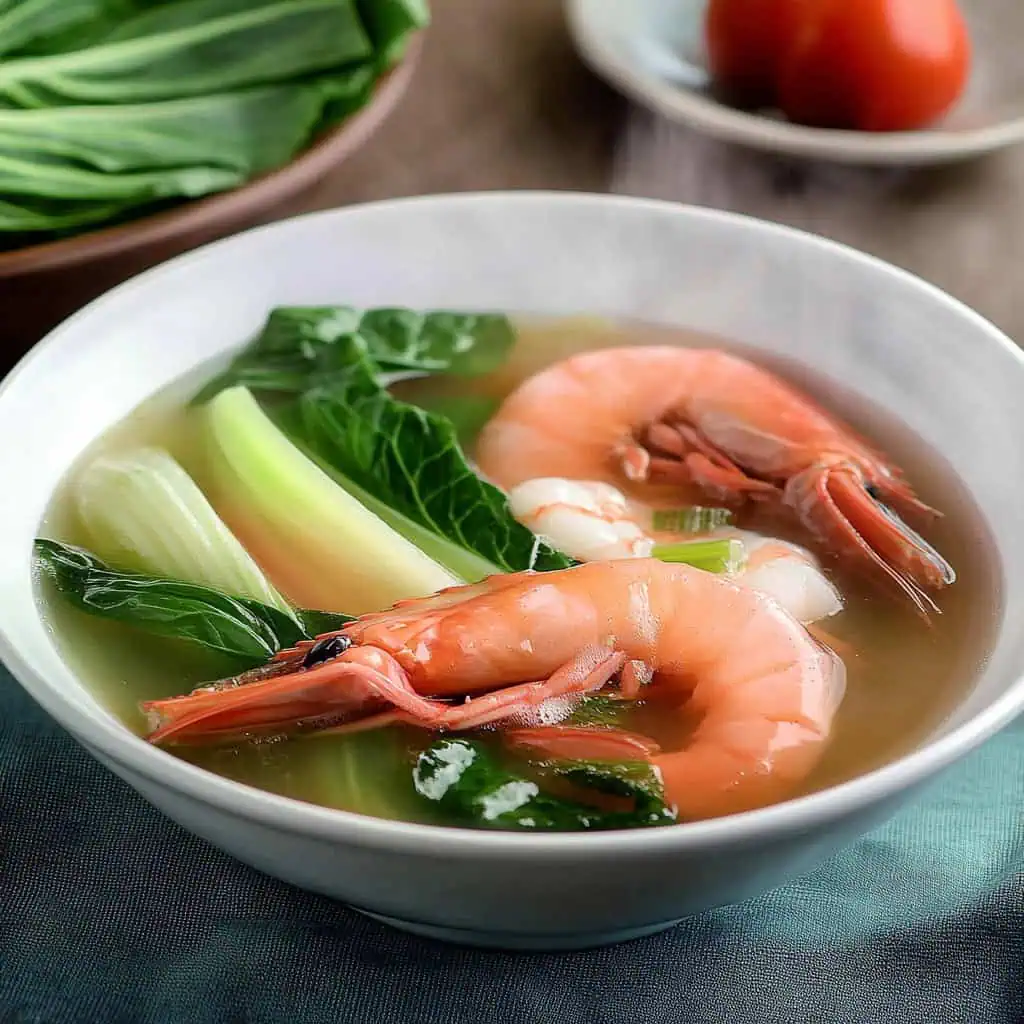

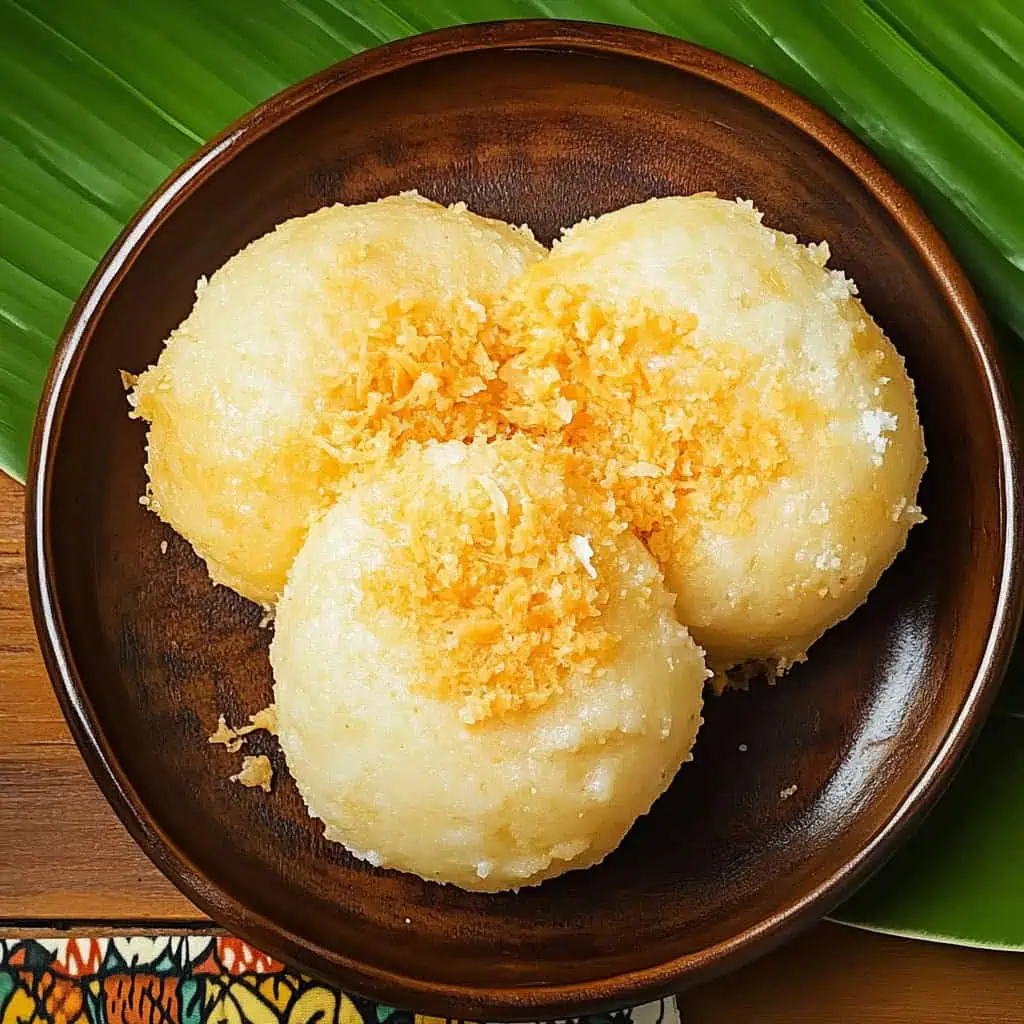
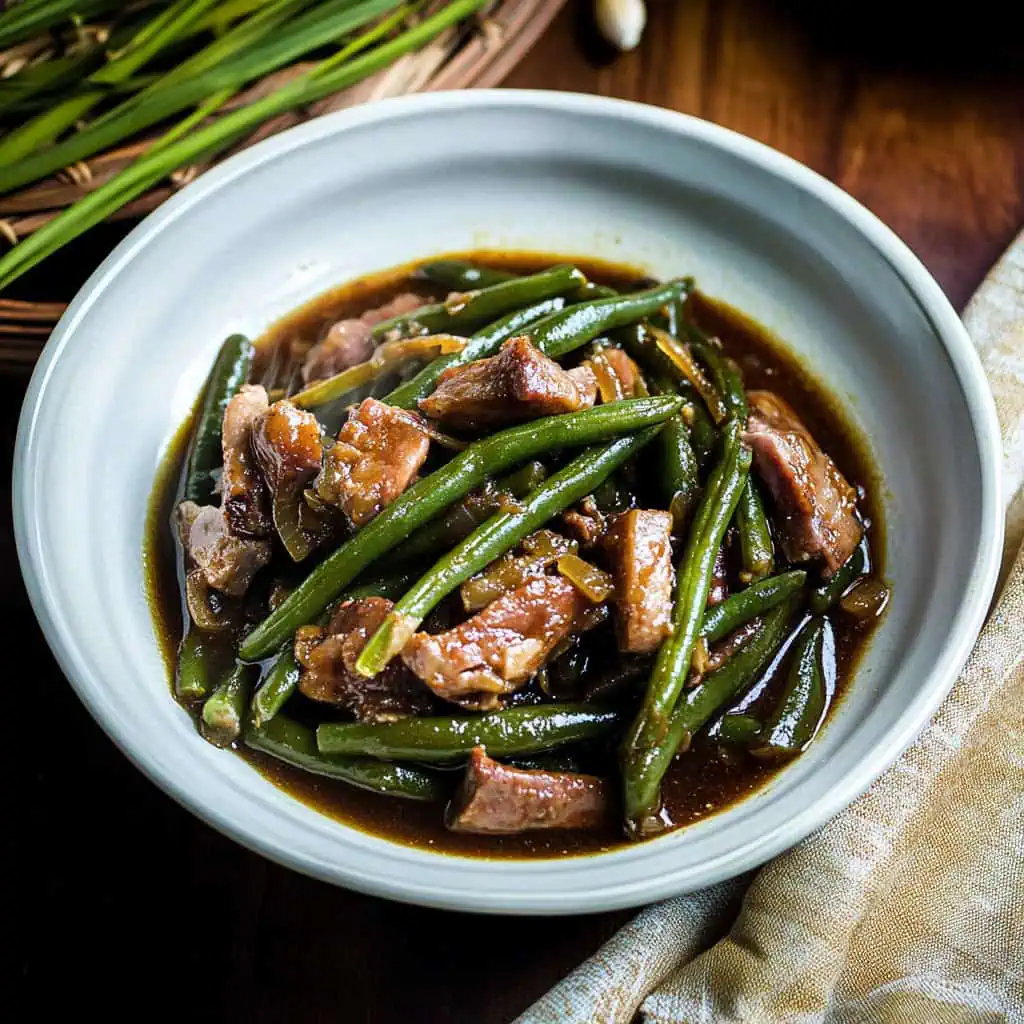
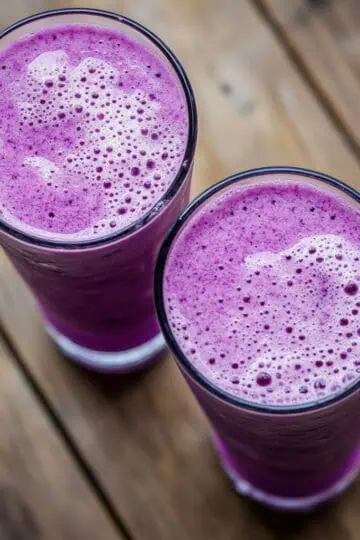
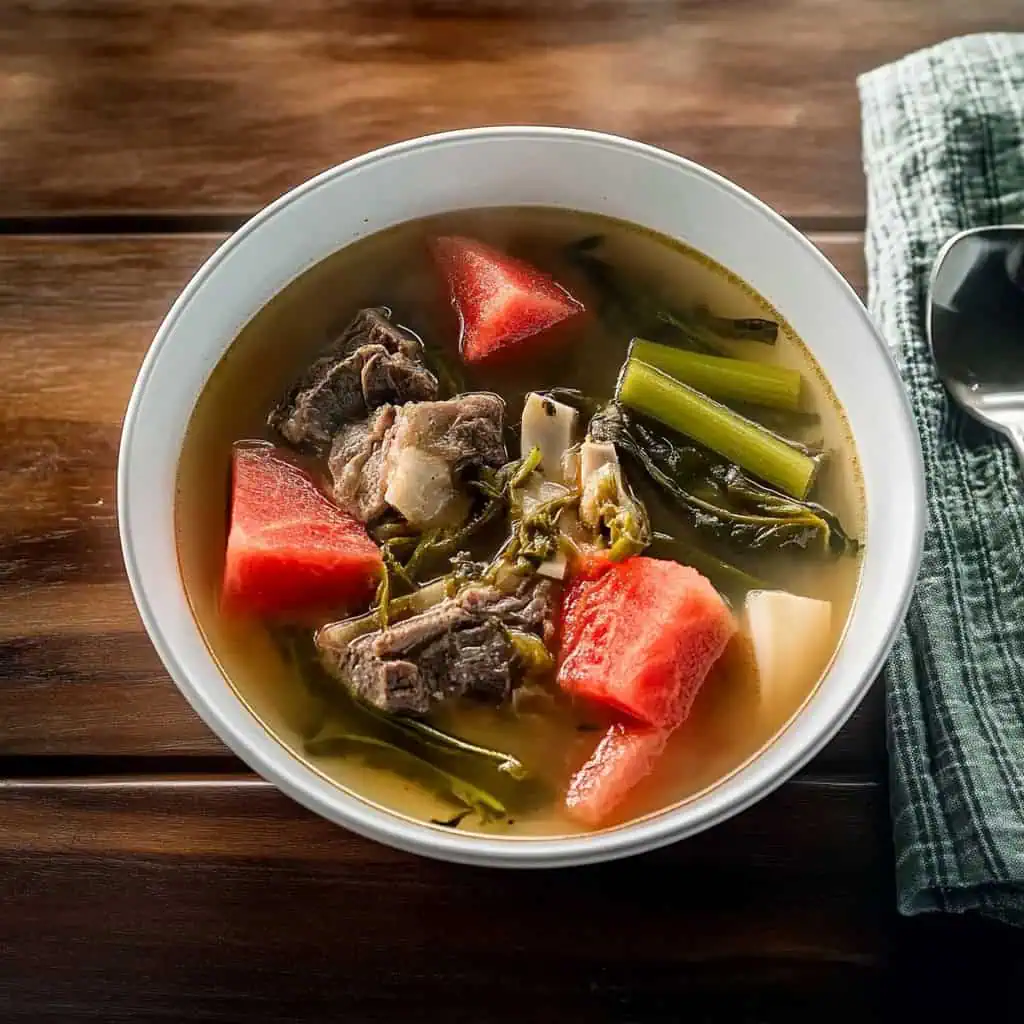

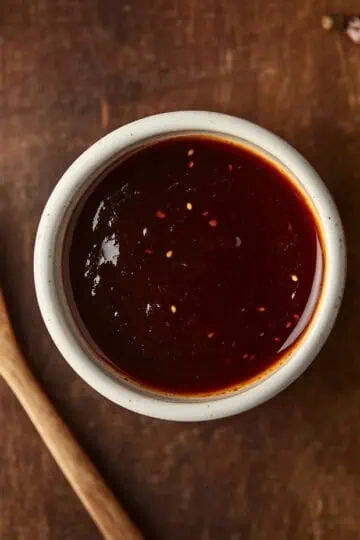

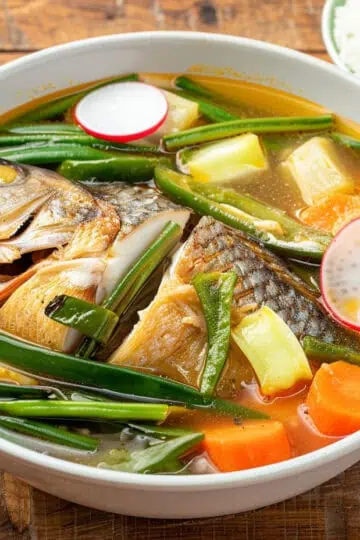
Comments
No Comments